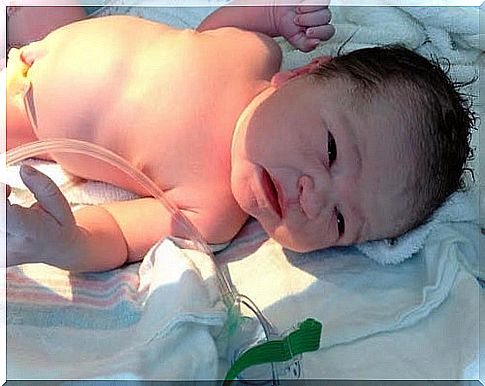Waterbirth: Is It Recommended?

Ensuring the right of the mother and her baby to have a humanized birth has been the objective of those who believe that the birth of a human being is a sacred moment that must be respected and defended.
Today we’ll talk about water birth as an alternative to offer peace of mind to the mother.
What does water birth consist of
The options for bringing the baby into the world are varied: natural, vertical or horizontal birth, cesarean and water birth.
On the last point the last few years have been full of discussions about its benefits and drawbacks. So if you’ve ever thought about the possibility of being in a bathtub or jacuzzi to welcome your baby,
we want you to have a clear perspective on the topic.
It’s not hard to hear that waterbirth creates a smoother transition from one watery environment to another (the womb and the bathtub) through the cervix.
However,
some obstetricians and neonatologists advise that at birth the baby is immediately removed from the water because it needs to breathe and therefore they do not support the theory that the baby takes advantage of the fact of being submerged with his mother.
So, if you want to opt for this alternative because you think your baby will have the opportunity to get better acquainted by staying in the water
it’s better to think about it very calmly, to weigh if it’s worth choosing this technique,
as it will only be a few seconds in which the baby will be submerged as it completes to completely step out of its birth path.
Below, we mention some
Important key points to consider before deciding to step into a Jacuzzi
to give birth to our little ones.
The temperature of the water in which the mother is submerged must be around 37ºC because it is a question of simulating the internal conditions in which the baby is found.
Advantages of Water Birth

The 37ºC in which the water is kept has anesthetic properties on the mother. Of course, there are those who call waterbirth “aquadural” when comparing it to epidural injections given to pregnant women.
the moms
they can share the labor with their partner.
That is, dads or moms can also enter the water and serve as physical and emotional support for the woman who is in a phase of hypersensitivity and vulnerability.
Water decreases the intensity of contractions,
while helping to keep blood pressure under control.
The feeling of pleasure that the mother has in the water
promotes the release of endorphins
which, in turn, reduce pain.
In a bathtub, the mother with her partner can change position whenever she wants to. You will also have the opportunity to get in and out of the water when convenient, always under medical supervision.
With regard to the baby, it is believed that when passing from an aquatic environment such as the mother’s womb to another such as the bathtub,
what is called birth trauma is reduced.
Water decreases the pressure characteristic of the mother’s pelvis on the newborn’s head.
It is possible that at the last minute there may be some inconvenience that forces doctors to take the mother out of the water to be taken to the operating room.
Disadvantages

Bath water is an ideal environment for bacteria and microbes,
especially if the mother has hemorrhages, ruptures membranes, or stools are expelled, which is a high risk of infection for both mother and baby.
Every woman is different and some may not be able to relax
and the pain is very intense. In these cases, the medical team will recommend leaving the water to apply the corresponding analgesics, such as epidurals.
If the mother does not relax, the possibility that she may experience nausea and a rise in blood pressure is not ruled out.
In full labor
the doctor may recommend ending the process in an operating room
due to any difficulty. This situation can generate disappointment or frustration in the mother.
Babies must be taken out of the water immediately.
when finished leaving the mother. As it is a fast movement, with little visibility to maneuver, it is possible that there is an avulsion (rupture) of the umbilical cord, which can lead to hemorrhage.
Although newborns have the diving reflex, with which their membranes keep their airways closed, if they even breathe during the few seconds they are underwater,
may undergo neonatal asphyxia
and possibly seizures.
If you decide to water birth, because the benefits are considered to outweigh the risks for you and your baby, consult with your obstetrician where they can offer you specialist medical attention.
Remember that no matter how you want the baby to be born,
what is essential is to choose a maternity hospital with adequate facilities to meet any unforeseen circumstances.
Doctors around the world recommend taking advantage of the relaxing benefits that bathtubs of water provide during labor, but once the mother has reached the necessary centimeters of dilation, it is preferred that they take her out of the water before the baby comes out to reduce the risk of infections.
Remember that the decision to be made with your partner must be endorsed by your doctor, whom you must trust completely,
so that on the day of birth, tranquility allows you to enjoy more of this beautiful and unique moment.








